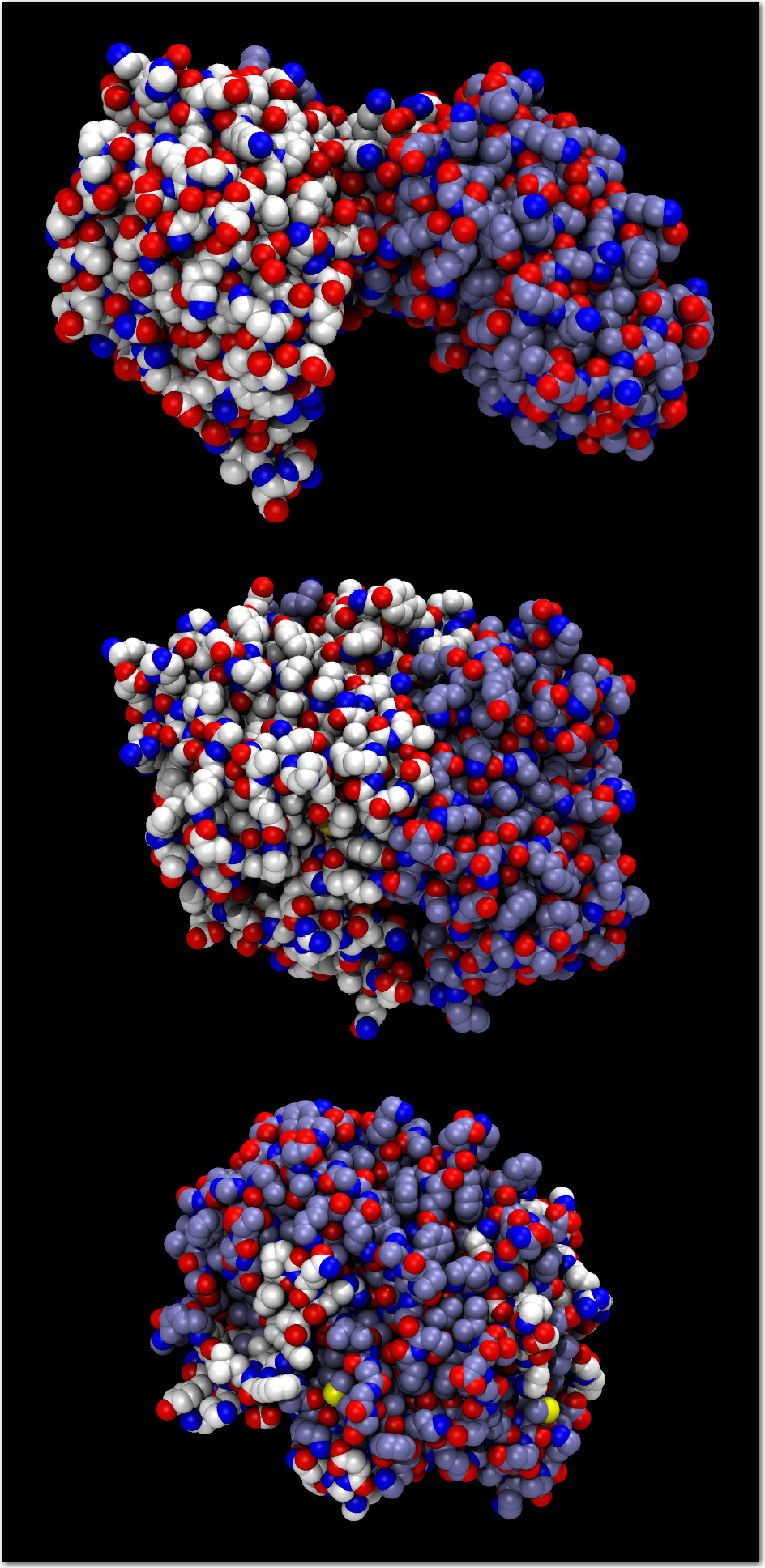UH Physicists Study Behavior of Enzyme Linked to Alzheimer's, Cancer
Results Published in the Journal of the Proceedings of the National Academy of Sciences

Margaret Cheung, assistant professor of physics at UH, and Antonios Samiotakis, a physics Ph.D. student, described their findings in a paper titled “Structure, function, and folding of phosphoglycerate kinase (PGK) are strongly perturbed by macromolecular crowding,” published in a recent issue of the journal Proceedings of the National Academy of Sciences, one of the world’s most-cited multidisciplinary scientific serials. The research was funded by a nearly $224,000 National Science Foundation grant in support of Samiotakis’ dissertation.
“Imagine you’re walking down the aisle toward an exit after a movie in a crowded theatre. The pace of your motion would be slowed down by the moving crowd and narrow space between the aisles. However, you can still maneuver your arm, stretch out and pat your friend on the shoulder who slept through the movie,” Cheung said. “This can be the same environment inside a crowded cell from the viewpoint of a protein, the workhorse of all living systems. Proteins always ‘talk’ to each other inside cells, and they pass information about what happens to the cell and how to respond promptly. Failure to do so may cause uncontrollable cell growth that leads to cancer or cause malfunction of a cell that leads to Alzheimer’s disease. Understanding a protein inside cells – in terms of structures and enzymatic activity – is important to shed light on preventing, managing or curing these diseases at a molecular level.”
Cheung, a theoretical physicist, and Martin Gruebele, her experimental collaborator at the University of Illinois at Urbana-Champaign, led a team that unlocked this mystery. Studying the PGK enzyme, Cheung used computer models that simulate the environment inside a cell. Biochemists typically study proteins in water, but such test tube research is limited because it cannot gauge how a protein actually functions inside a crowded cell, where it can interact with DNA, ribosomes and other molecules.
The PGK enzyme plays a key role in the process of glycolysis, which is the metabolic breakdown of glucose and other sugars that releases energy in the form of ATP. ATP molecules are basically like packets of fuel that power biological molecular motors. This conversion of food to energy is present in every organism, from yeast to humans. Malfunction of the glycolytic pathway has been linked to Alzheimer’s disease and cancer. Patients with reduced metabolic rates in the brain have been found to be at risk for Alzheimer’s disease, while out-of-control metabolic rates are believed to fuel the growth of malignant tumor cells.
Scientists had previously believed that a PGK enzyme shaped like Pac-Man had to undergo a dynamic hinge motion to perform its metabolic function. However, in the computer models mimicking the cell interior, Cheung found that the enzyme was already functioning in its closed Pac-Man state in the jam-packed surrounding. In fact, the enzyme was 15 times more active in the tight spaces of a crowded cell. This shows that in cell-like conditions the function of a protein is more active and efficient than in a dilute condition, such as a test tube. This finding can drastically transform how scientists view proteins and their behavior when the environment of a cell is taken into account.
“This work deepens researchers’ understanding of how proteins function, or don’t function, in real cell conditions,” Samiotakis said. “By understanding the impact of a crowded cell on the structure, dynamics of proteins can help researchers design efficient therapeutic means that will work better inside cells, with the goal to prevent diseases and improve human health.”
Cheung and Samiotakis’ computer simulations – performed using the supercomputers at the Texas Learning and Computation Center (TLC2) – were coupled with in vitro experiments by Gruebele and his team. Using the high-performance computing resources of TLC2 factored significantly in the success of their work.
“Picture having a type of medicine that can precisely recognize and target a key that causes Alzheimer’s or cancer inside a crowded cell. Envision, then, the ability to switch a sick cell like this back to its healthy form of interaction at a molecular level,” Cheung said. “This may become a reality in the near future. Our lab at UH is working toward that vision.”
A copy of the article is available at http://www.ncbi.nlm.nih.gov/pmc/articles/PMC2955104/. A video produced by TLC2 that depicts PGK in the crowded environment inside cells is available at http://vimeo.com/15969373.
- Lisa Merkl, University Communication